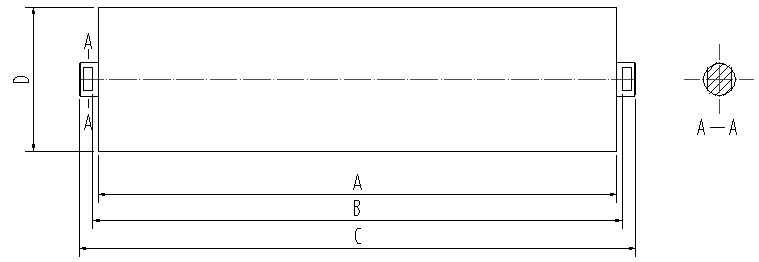 Afrikaans
Afrikaans  Albanian
Albanian  Amharic
Amharic  Arabic
Arabic  Armenian
Armenian  Azerbaijani
Azerbaijani  Basque
Basque  Belarusian
Belarusian  Bengali
Bengali  Bosnian
Bosnian  Bulgarian
Bulgarian  Catalan
Catalan  Cebuano
Cebuano  Corsican
Corsican  Croatian
Croatian  Czech
Czech  Danish
Danish  Dutch
Dutch  English
English  Esperanto
Esperanto  Estonian
Estonian  Finnish
Finnish  French
French  Frisian
Frisian  Galician
Galician  Georgian
Georgian  German
German  Greek
Greek  Gujarati
Gujarati  Haitian Creole
Haitian Creole  hausa
hausa  hawaiian
hawaiian  Hebrew
Hebrew  Hindi
Hindi  Miao
Miao  Hungarian
Hungarian  Icelandic
Icelandic  igbo
igbo  Indonesian
Indonesian  irish
irish  Italian
Italian  Japanese
Japanese  Javanese
Javanese  Kannada
Kannada  kazakh
kazakh  Khmer
Khmer  Rwandese
Rwandese  Korean
Korean  Kurdish
Kurdish  Kyrgyz
Kyrgyz  Lao
Lao  Latin
Latin  Latvian
Latvian  Lithuanian
Lithuanian  Luxembourgish
Luxembourgish  Macedonian
Macedonian  Malgashi
Malgashi  Malay
Malay  Malayalam
Malayalam  Maltese
Maltese  Maori
Maori  Marathi
Marathi  Mongolian
Mongolian  Myanmar
Myanmar  Nepali
Nepali  Norwegian
Norwegian  Norwegian
Norwegian  Occitan
Occitan  Pashto
Pashto  Persian
Persian  Polish
Polish  Portuguese
Portuguese  Punjabi
Punjabi  Romanian
Romanian  Russian
Russian  Samoan
Samoan  Scottish Gaelic
Scottish Gaelic  Serbian
Serbian  Sesotho
Sesotho  Shona
Shona  Sindhi
Sindhi  Sinhala
Sinhala  Slovak
Slovak  Slovenian
Slovenian  Somali
Somali  Spanish
Spanish  Sundanese
Sundanese  Swahili
Swahili  Swedish
Swedish  Tagalog
Tagalog  Tajik
Tajik  Tamil
Tamil  Tatar
Tatar  Telugu
Telugu  Thai
Thai  Turkish
Turkish  Turkmen
Turkmen  Ukrainian
Ukrainian  Urdu
Urdu  Uighur
Uighur  Uzbek
Uzbek  Vietnamese
Vietnamese  Welsh
Welsh  Bantu
Bantu  Yiddish
Yiddish  Yoruba
Yoruba  Zulu
Zulu Components of Conveyor Belt Systems for Efficient Material Handling
Understanding Conveyor Belt System Parts A Key to Efficient Material Handling
Conveyor belt systems are integral to a wide range of industries, from manufacturing and warehousing to mining and logistics. These systems facilitate the smooth and efficient movement of materials, thereby enhancing productivity and reducing labor costs. To fully appreciate the functionality and advantages of conveyor belts, it is essential to understand their key components.
1. Belt Material The conveyor belt itself is perhaps the most significant part of any conveyor system. It is typically made from various materials, including rubber, plastic, and metal, depending on the application. For instance, rubber belts are commonly used for heavy-duty applications due to their durability and resistance to wear. Conversely, plastic belts are favored for their flexibility and ease of cleaning in food processing facilities. The choice of belt material can drastically affect the efficiency and effectiveness of the conveyor system.
Understanding Conveyor Belt System Parts A Key to Efficient Material Handling
3. Belt Support System The structure that supports the belt, often referred to as the conveying platform, consists of various components like idlers and rollers. Idlers are used to support the belt, helping it maintain its shape and direction throughout the conveying process. Rollers assist in minimizing friction, allowing the belt to move with ease. A well-designed support system not only enhances durability but also prevents unnecessary wear and tear on the belt.
conveyor belt system parts

4. Drive Unit The drive unit, typically consisting of a motor and gearbox, provides the necessary power to move the belt. The motor's power specifications should align with the load requirements and speed of the conveyor system. A reliable drive unit ensures consistent performance, even under varying load conditions.
5. Control Systems Modern conveyor belt systems are equipped with sophisticated control systems that enhance their functionality. These systems can include sensors to monitor the position of materials, as well as automated controls for start/stop functions. Integration with existing operations can significantly improve workflow and reduce bottlenecks.
6. Safety Features Lastly, safety is a paramount concern in any conveyor system. Components such as emergency stop buttons, guards, and safety switches are essential to protect workers from potential hazards. Routine inspections and maintenance are vital in ensuring that these safety features function correctly and that the entire system operates without risk to personnel.
In conclusion, understanding the essential parts of a conveyor belt system is crucial for optimizing performance and ensuring safety in material handling operations. Each component plays a vital role in the overall functionality of the system, and careful consideration must be given to the selection and maintenance of these parts. By investing in quality components and incorporating advanced technology, businesses can enhance their efficiency, reliability, and safety in operations involving conveyor belt systems.
-
Revolutionizing Conveyor Reliability with Advanced Rubber Lagging PulleysNewsJul.22,2025
-
Powering Precision and Durability with Expert Manufacturers of Conveyor ComponentsNewsJul.22,2025
-
Optimizing Conveyor Systems with Advanced Conveyor AccessoriesNewsJul.22,2025
-
Maximize Conveyor Efficiency with Quality Conveyor Idler PulleysNewsJul.22,2025
-
Future-Proof Your Conveyor System with High-Performance Polyurethane RollerNewsJul.22,2025
-
Driving Efficiency Forward with Quality Idlers and RollersNewsJul.22,2025





























